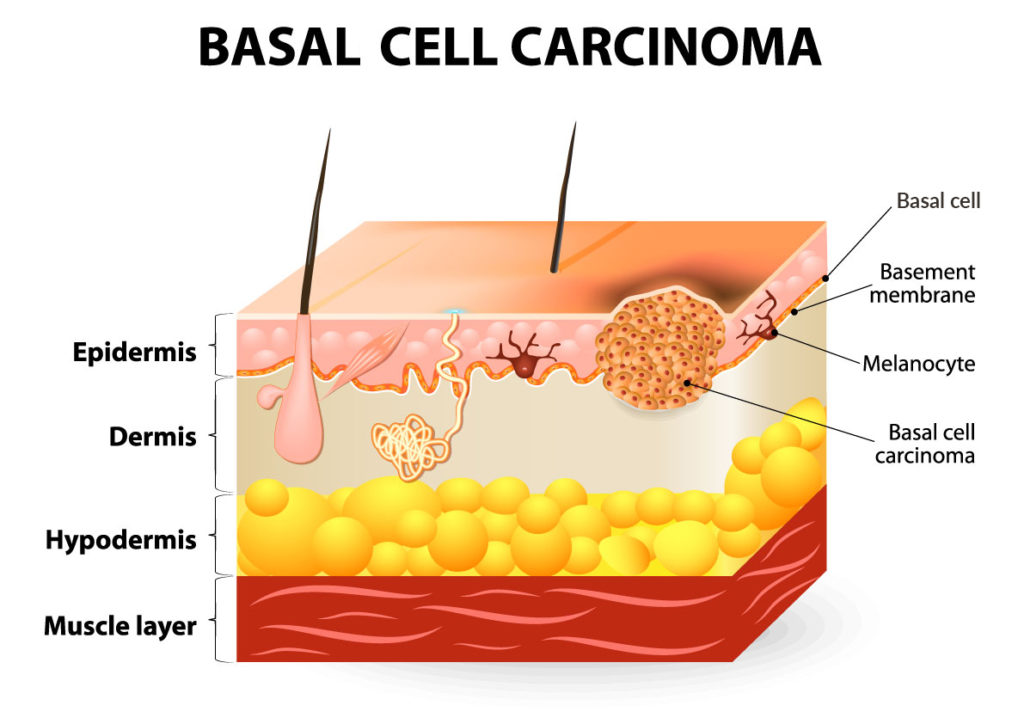Basal cell carcinoma is the most common skin cancer.
Risk factors for skin cancer include the following: lighter skin or eye color, skin that burns or freckles rather than tans, outdoor occupations and enthusiasts, personal or family history of skin cancer, use of tanning beds or other radiation treatments, or a weakened immune system. However, skin cancer can affect any group or skin color. One in five Americans will develop skin cancer in their lifetime!” Skin cancer is being diagnosed more commonly in younger patients due to tanning bed use.
Typical presentations of BCC include:
- A shiny bump that is pearly or translucent and is often pink, red, or white. A pink growth with a slightly elevated rolled border and a crusted indentation in the center. As the growth slowly enlarges, tiny blood vessels may develop on the surface. The bump can also be tan, black, or brown in dark haired people and can be confused as a mole.
- An open sore that bleeds, oozes, or crusts and remains open for three or more weeks. A persistent non-healing sore is a very common sign of an early basal cell carcinoma.
- A scar-like area that is white, yellow, or waxy, and often has poorly defined borders. The skin itself appears shiny and taut.
- A reddish patch or irritated area frequently occurring on the chest, shoulders, arms, or legs. Sometimes the patch crusts. It may also itch or hurt. At other times, it persists with no noticeable discomfort.
While BCCs seldom spread to other parts of the body, they can be locally destructive and invade deeper tissue, bone, or even into structures such as the eye, ear, or nose.

